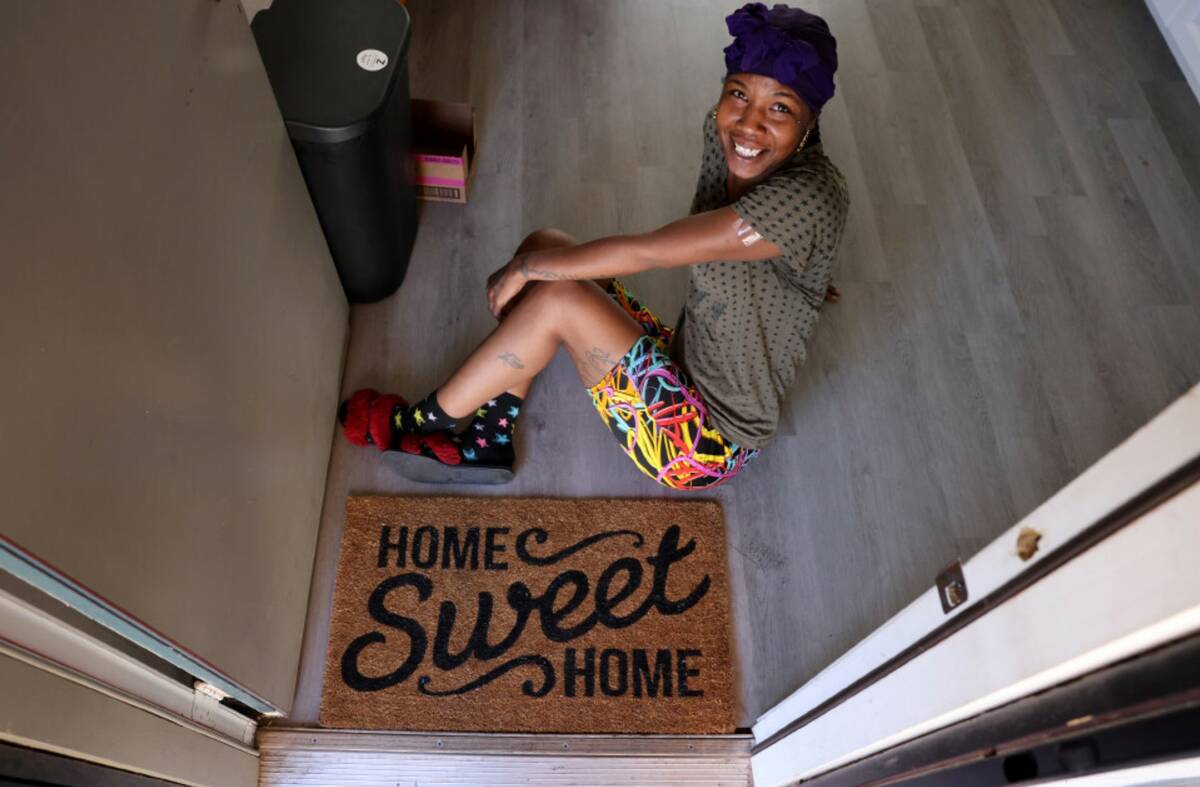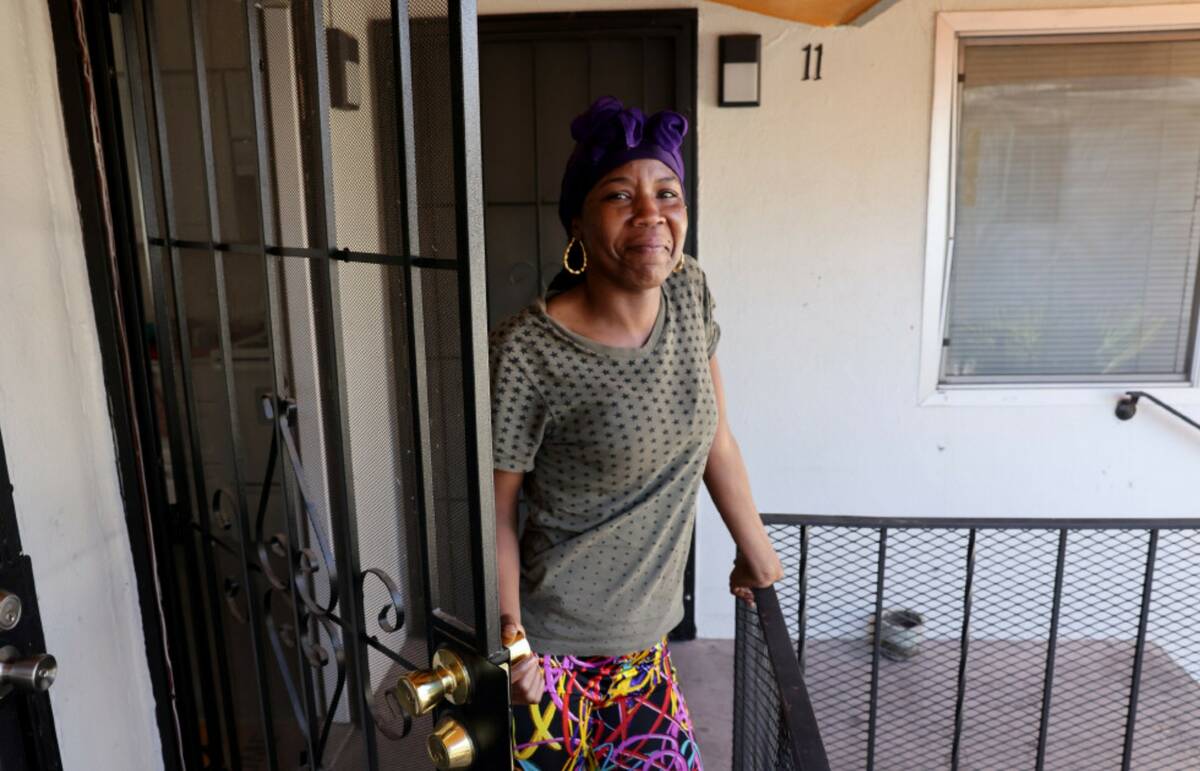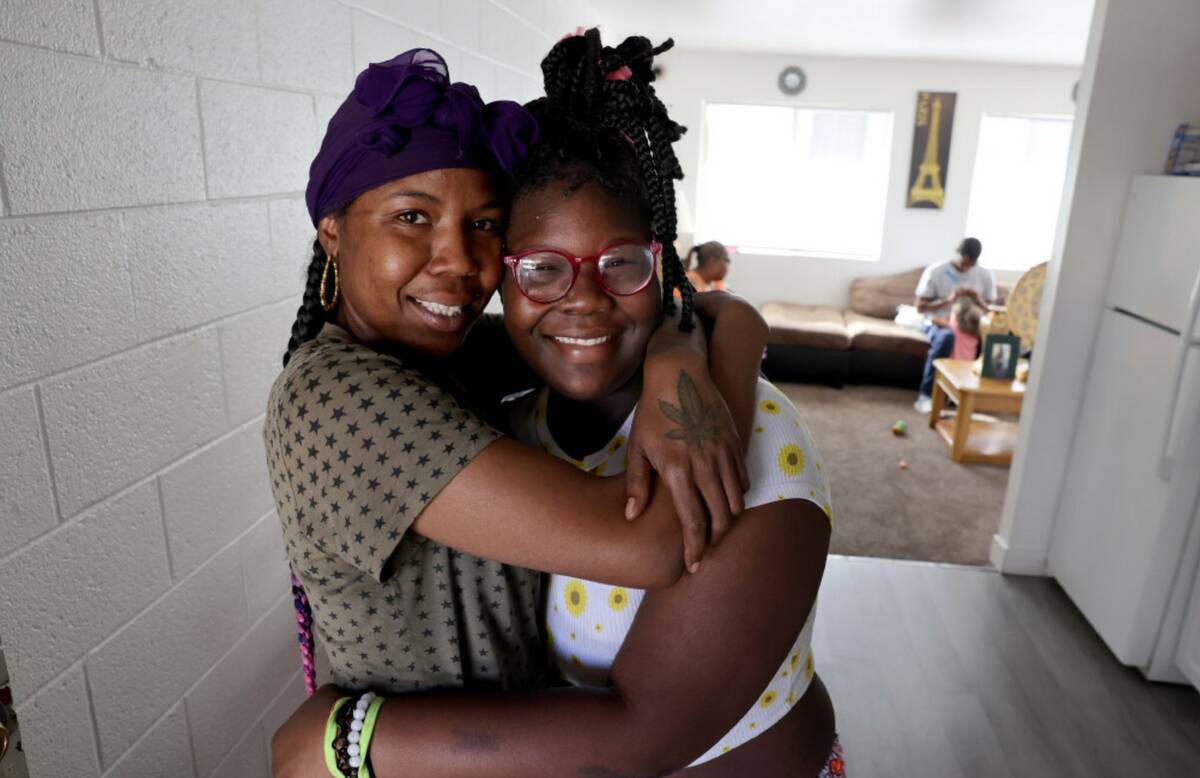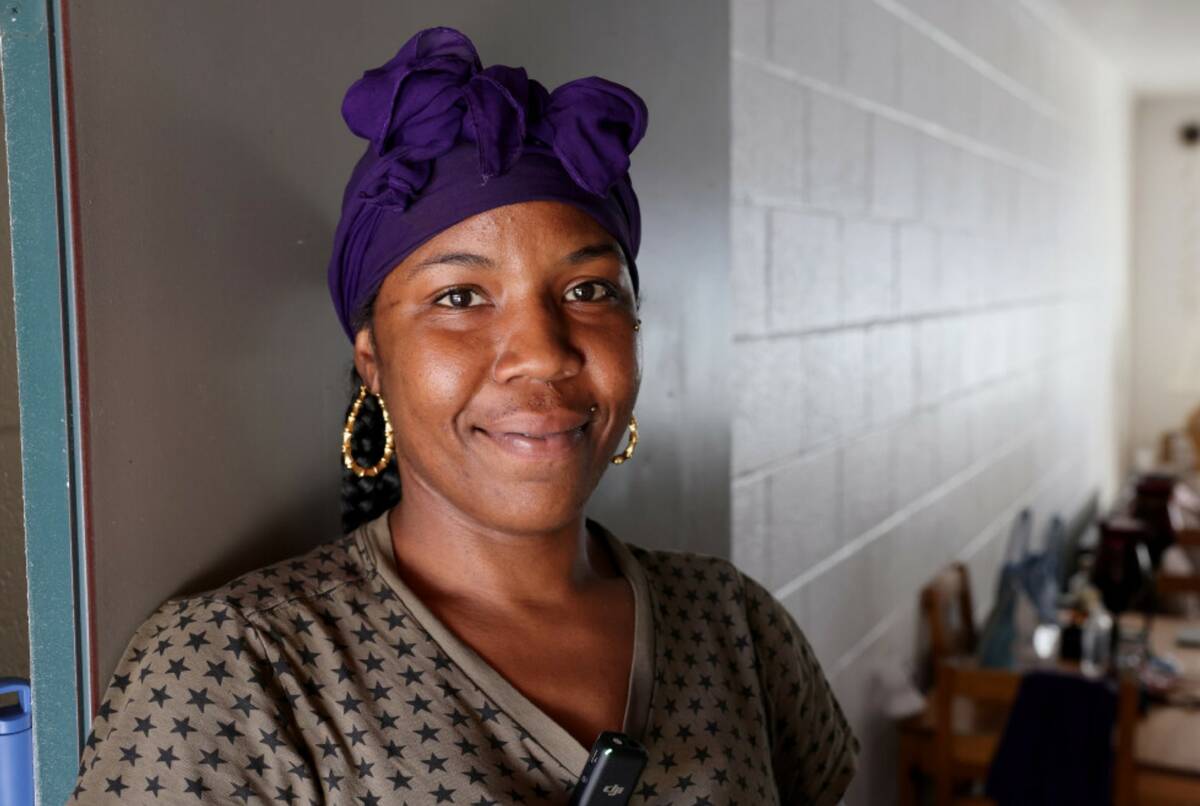Finding a home: Families get help from Las Vegas nonprofit
Upon fleeing an abusive relationship, Victoria Mike and her teenage daughter packed into a 1992 Nissan Maxima they called home for months.
They kept few possessions — clothes and hygienic products — worried about finding low-traffic and well-lit neighborhoods. Their sleep would be disturbed by police who would tell them they couldn’t park there, the 29-year-old mother told the Las Vegas Review-Journal.
“It’s horrible,” she said about being homeless. “We were eating where we could. We were showering where we could.”
One day in late April, parked at Foremaster Lane, Mike spotted the CARE (Critical Assistance Relief Effort) Complex situated within the city of Las Vegas’ Corridor of Hope Courtyard, where unsheltered locals tend to congregate.
The nonprofit aims to “fill gaps in services” the city and other organizations can’t keep up with, according to Michael Swecker, CARE’s founder and board secretary.
Not expecting any help, Mike said she filled out an application.
She was surprised when Swecker reached out within an hour.
By mid-May, she and her 13-year-old daughter had a roof over their heads.
CARE’s H2H program provides financial assistance for working homeless persons who need help paying hefty first-month fees associated with renting a place, said Swecker, adding that the program has helped more than 200 people like Mike since 2017.
The overwhelming majority were able to stay housed for at least a year, he added.
“We’re trying to target the population that’s unhoused, but is also making enough money (to be self-sustainable),” Swecker said.
A helping hand
The homelessness issue in Southern Nevada is at a critical point.
A one-day census conducted earlier this year determined that the 6,566 unhoused locals tallied was the highest number since 2015, according to the Southern Nevada Homelessness Continuum of Care.
Local homelessness experts expect the crisis to worsen due to a shortage of affordable housing, inflation, and an explosion of evictions.
About 97 percent of those counted in the census were found in the streets, the desert, encampments and vehicles, officials said.
For Swecker, the issue can best be dented with an increase in affordable housing, livable wages and expedited targeted assistance not caught up in bureaucratic limbo.
“The system can create billions of dollars for relief,” he said. “But if it’s not able to be delivered to people at the right time, so much of it will be wasted.”
Swecker said CARE rejects a stereotype that “if you’re homeless, you’re not trying to work,” arguing that up to a quarter of the unhoused population is employed.
A 2021 study by the University of Chicago put that figure at about 40 percent for those who weren’t staying at emergency shelters.
Living in the streets, while spending money on extended-stay hotels from time to time makes it “difficult if not impossible” to save funds for pricey first-month fees when renting a home, Swecker said.
Furthermore, he added, being homeless makes it difficult to keep a job, reinforcing a vicious cycle.
Sleeping in a vehicle
Jasmine Scott’s struggles began in 2018, after the birth of her third child exacerbated a diagnosis of postpartum depression.
“I was staying place to place, me and my family,” she said.
Eventually, they ended up homeless.
The children — now ages 6, 8, and 10 — stayed with family, but the couple had to sleep in their vehicle, she said.
“It was just very uncomfortable,” she said. “It’s not only sleeping in a car; when you wake up you still have to get yourself ready and figure out the day… always thinking about the kids.”
Scott heard about CARE after she was turned down from a shelter.
She said the nonprofit helped put the family in a weekly living space before placing them in a home two weeks later.
Having a home “gave me more motivation, more comfort knowing that I can continue to focus on things that need to be done, so I don’t need to be in that situation again,” Scott told the Review-Journal.
Nonprofit’s mission
CARE was founded in the early 2000s as a mobile service to feed the homeless population at night, meals geared toward working people who — due to their jobs — couldn’t catch daytime meals at shelters.
CARE bought its headquarters in 2014 and opened the doors three years later.
The city recently abandoned an effort to buy the building it wanted to fold into the Corridor of Hope, nonprofit officials said.
The nonprofit’s location might not work in another neighborhood, said Andrew Levy, chairman of CARE.
“We truly believe that we offer services to the underserved that the city can’t, or at this point, aren’t able to afford to those citizens,” he said.
The building offers, among other services, personal lockers, clothing, mail service, showers, a charging station, public computers, bus passes and meals, the nonprofit said.
It’s also a hub for other organizations.
CARE partnered with the Aghaby Comprehensive Community Health Center.
While CARE keeps a medical exam room in-house, it also maintains a driving service to take patients to the off-site clinic.
Once a month, outside organizations partner for a health care fair, free haircuts and even pet grooming services, the nonprofit said.
The complex was the first to offer free, drinking water 24/7 in the area.
Critics within the social services community have argued that feeding and hydrating the homeless population discourages a subset of the population from accepting longer-term solutions, Swecker said.
“I don’t believe that,” he said. “It doesn’t mean that both things can’t have merit to them, but it’s so cold and callous to say, ‘at that expense, we’re going to let people die, or not give them water;’ it doesn’t make sense.”
‘Stability’
Scott’s family recently moved into a spacious house, and she said Swecker still checks on them.
She’s a medical assistant, who is studying for a management career.
She said her kids finally have enough room to focus on their passion for art, science and magic.
“I just want them to have stability to be able to help pay for them to go to college in the future,” she said.
Mike, the woman who slept in the Nissan, said that there were days she kept her daughter from school, because she couldn’t afford fuel. Sometimes the girl stayed with her father, who couldn’t maintain a stable home.
Mike said that her job sometimes cuts her hours and that CARE recently subsidized part of her rent.
She dreams of becoming a nurse. But for now, she’s happy her daughter has food and a place to sleep.
”Really,” she said, “I just want my baby to live life and be comfortable and not have to worry about any trouble.”
Contact Ricardo Torres-Cortez at rtorres@reviewjournal.com Follow on X @rickytwrites.


























